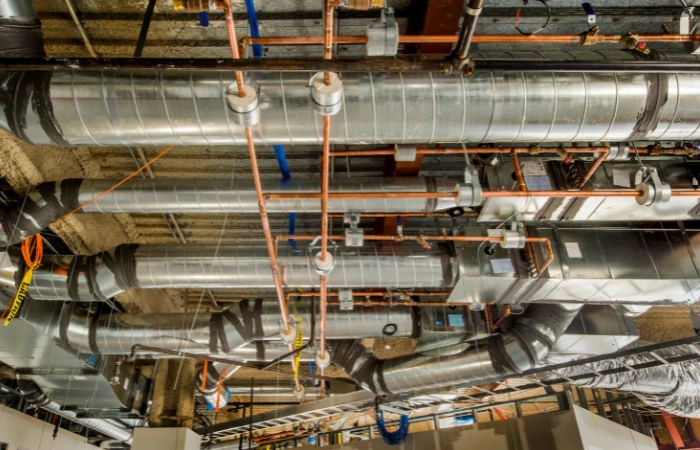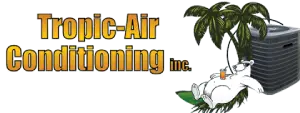Insulated ducting is more than just a technical upgrade when optimizing your HVAC system; it’s a step towards enhancing the comfort, efficiency, and health of your indoor environment. Whether you’re combating the sweltering heat of summer or the chilly drafts of winter, the right insulation can make a world of difference.
In this comprehensive guide, we’ll explore what insulated ducting is, the various types available, and the myriad benefits it brings. Plus, we’ll share essential tips on installation, maintenance, and frequently asked questions to help you make the most of your HVAC system
What is Insulated Ducting?
Insulated ducting refers to the use of insulation materials around HVAC ductwork. This insulation acts as a barrier, minimizing the loss of heated or cooled air as it crosses through the ducts from the HVAC unit to various parts of a building. The primary goals of this is to preserve the air temperature, prevent condensation, and reduce energy consumption.
Types of Insulated Ducting
When considering insulated ducting for an HVAC system, there are several types of insulation materials and methods to choose from, each with its own set of advantages. Here’s a look at some of the most typical types:
- Fiberglass Insulation – Fiberglass is a common insulation material for ductwork, known for its excellent thermal resistance and sound absorption properties. It can be applied as a liner inside the duct or as a wrap around the exterior.
- Foam Board Insulation – Foam board, made from polystyrene, polyisocyanurate, or polyurethane, offers high insulation values with less thickness compared to fiberglass. It’s rigid and can be cut to fit around ductwork, providing excellent thermal insulation.
- Reflective Insulation – Also known as radiant barriers, reflective insulation is made from materials like aluminum foil that reflect heat away from the ducts. This type is particularly effective in hot climates or in attic spaces, where it can prevent heat from entering the ducts and warming the air inside.
- Flexible Insulated Ducts – These are ducts that come pre-insulated with a layer of insulation material wrapped around them. They are flexible, making them easy to install in difficult-to-reach areas. The insulation is typically made from fiberglass or polyester fiber.
- Spray Foam Insulation – Spray foam can be laid directly to the exterior of ductwork in situ. It expands to fill gaps and seal leaks, providing both thermal insulation and air sealing. This type is effective for irregularly shaped ducts or in areas where traditional insulation methods are difficult to apply.
Benefits of Insulated Ducting
Insulated ducting is a transformative element in the HVAC industry, offering a myriad of advantages that extend far beyond simple energy savings. This critical component of your HVAC system can dramatically enhance the efficiency, comfort, and overall health of your indoor environment. Below, we’ll delve into the myriad benefits it brings to both residential and commercial settings.
Significant Energy Savings
One of the most immediate benefits of enhancing the thermal efficiency of ductwork is the reduction in energy consumption. By minimizing the loss of heat in the winter and the gain of heat in the summer, such ductwork ensures that your HVAC system operates with maximum efficiency. This not only leads to lower utility accounts but also contributes to sustainability goals by reducing the carbon footprint linked with heating and cooling operations.
Enhanced Indoor Comfort
Comfort is paramount in any living or working environment, and thermally efficient ductwork plays a key role in achieving it. Maintaining the temperature of the air as it travels through the ductwork ensures consistent climate control across all rooms. This eliminates the problem of uneven temperatures, where some areas become too hot or too cold, thereby enhancing comfort levels throughout the building.
Prevention of Condensation and Related Problems
Condensation within ductwork can lead to a host of issues, including mold growth, rust, and deterioration of the ducts themselves. This not only compromises air quality but can also lead to costly repairs and replacements. Thermally efficient ductwork maintains the temperature of the air, preventing the exterior of the ducts from reaching dew point temperatures where condensation can occur.
Improved Air Quality
By preventing condensation and the resultant mold growth, thermally efficient ductwork contributes to healthier indoor air quality. Furthermore, such ducts are less prone to leaks, which can draw in pollutants and allergens from outside or unconditioned spaces. This is mainly beneficial for individuals with allergies, asthma, or other respiratory issues.
Noise Reduction
HVAC systems can generate significant noise, particularly when air rushes through the ductwork. Thermally efficient ductwork acts as a sound barrier, absorbing vibrations and dampening the noise created by the airflow and the operation of the HVAC system. This leads to a quieter, more serene indoor environment, which is particularly valuable in residential areas and workspaces requiring concentration.
Installation and Maintenance Tips

Installing and maintaining insulated ducting efficiently can significantly improve your HVAC system’s efficiency, reduce energy costs, and ensure a comfortable indoor environment. Here are some tips for the installation and maintenance:
• Proper Installation
Proper installation is vital for the effectiveness of insulated ducting. It’s essential to ensure that all ductwork is uniformly covered with insulation, especially at joints, corners, and connections where air leaks are most likely to occur. Special attention should be paid to sealing these leaks with appropriate mastic or foil-backed tape to prevent air loss.
Additionally, insulating materials should be cut to fit snugly around ducts without compressing the insulation, as this can reduce its thermal resistance. Correct installation practices not only maximize energy efficiency but also enhance the overall performance of the HVAC system.
• Sealing Ductwork
Sealing ductwork is crucial to prevent air leaks, which can remarkably reduce the efficiency of your HVAC system. Use high-quality sealants, such as mastic or aluminum foil tape, to seal all seams and joints in the ductwork. Ensure the ducts are clean and dry before applying the sealant for the best adhesion. Properly sealed ductwork will minimize energy loss and improve the system’s ability to maintain consistent temperatures throughout the building.
• Regular Inspections
Conducting regular inspections of both ductwork and insulation is key to maintaining optimal efficiency. Over time, insulation may degrade, shift, or suffer damage from pests, construction, or human activity. Checking for and promptly repairing any compromised areas can prevent significant energy loss and degradation of system performance. Inspections should also include looking for signs of moisture or mold, which could indicate leaks or condensation issues that need addressing.
• Cleaning and Maintenance
Duct cleaning and maintenance are essential for preserving air quality and guaranteeing the HVAC system operates efficiently. Dust, debris, and other obstructions can reduce airflow, strain the HVAC system, and lead to poor indoor air quality. Professional cleaning every few years or as needed, based on inspections and usage, can help maintain system efficiency and extend the lifespan of both the HVAC system and the insulation materials used within the ductwork.
• Insulation Upkeep
Maintaining the integrity of the duct insulation is critical for sustained energy efficiency. Inspect insulation for any signs of wear, such as tears, wet spots, or areas where it has become compressed or dislodged. Damaged or wet insulation should be replaced promptly, as it can no longer effectively prevent heat loss or gain. Additionally, upgrading insulation to a higher R-value (a measure of thermal resistance) in certain areas may be beneficial for improving overall system efficiency and performance.
Insulation Ducting FAQ’s
What are the key advantages of wrapping HVAC ducts with insulation materials?
Wrapping HVAC ducts with insulation materials offers several key advantages, including significant energy savings due to reduced heat loss or gain, enhanced indoor comfort through consistent temperature distribution, prevention of condensation, which can lead to mold and rust, improved air quality by minimizing leaks that can introduce pollutants, and noise reduction from airflow and system operation.
How does insulating HVAC ductwork contribute to energy efficiency?
Insulating HVAC ductwork minimizes the loss of heated or cooled air as it moves through the system, ensuring that less energy is required to maintain desired indoor temperatures. This reduction in energy demand not only lowers utility bills but also decreases the environmental impact of heating and cooling operations, making it a key strategy for energy-efficient home and building management.
Can insulating ducts help with noise control in my home or office?
Yes, insulating ducts can significantly help with noise control by absorbing vibrations and dampening the sound of air rushing through the HVAC system. This can create a quieter, more comfortable environment, especially in spaces where noise reduction is important for relaxation or concentration.
Conclusion
Optimizing your HVAC system with insulated ducting is a smart and efficient way to enhance the comfort, health, and energy efficiency of your indoor environment. From significant energy savings to improved air quality and noise reduction, the benefits are clear. By carefully selecting the right insulation type and ensuring correct installation and maintenance, you can enjoy a more relaxed and sustainable living or working space.
So, if you need an expert to optimize your HVAC system with insulated ducting, Tropic-Air Conditioning Inc. is here to help. Enhance your comfort, efficiency, and indoor health with our professional services. Contact us today!




